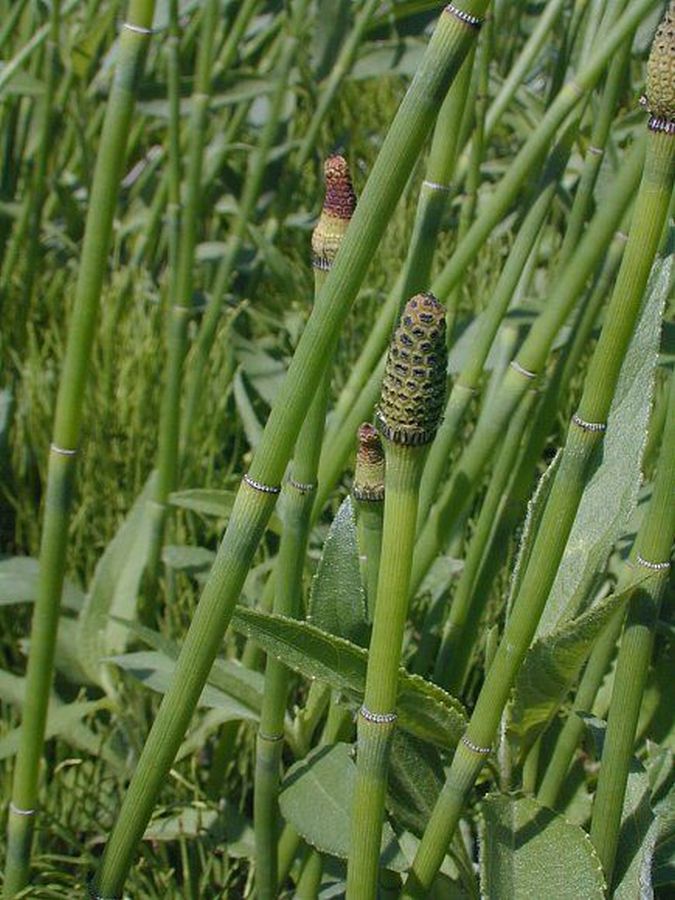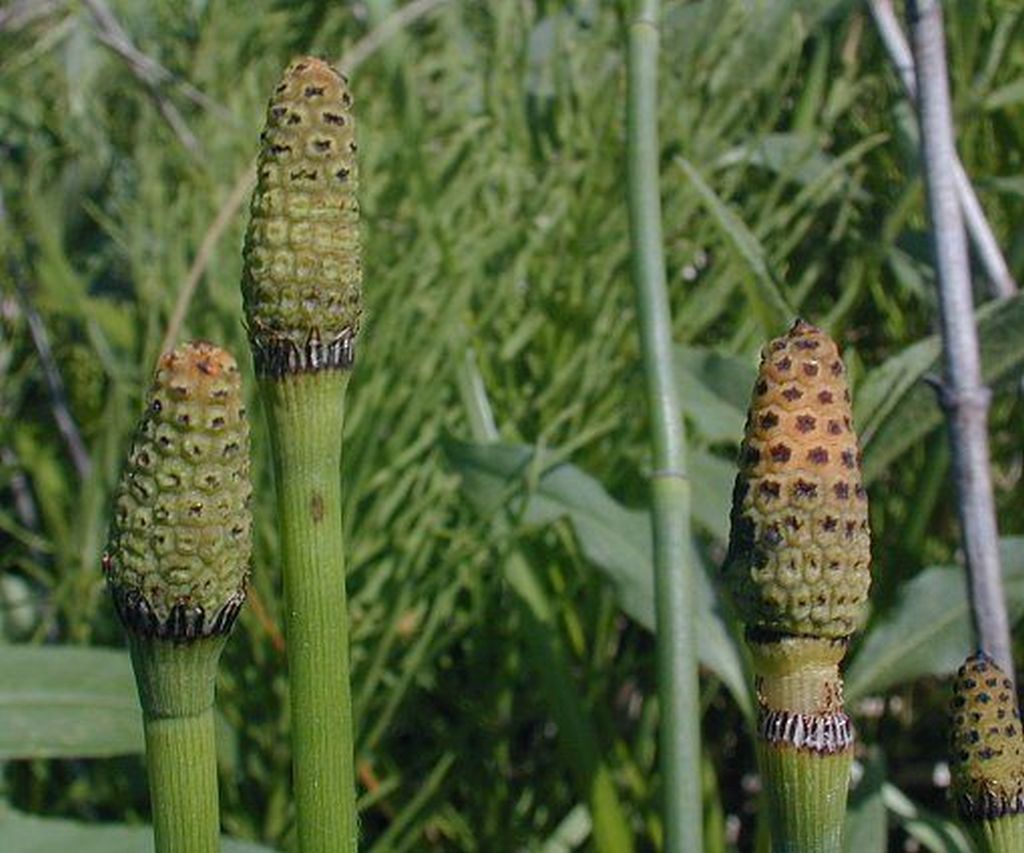
18 May 2022
Many of us are familiar with horsetail (Equisetum) because it looks so unusual. Its hollow stems are ridged and jointed and grow in dense clumps as much as three feet tall. None of the stems have apparent leaves but some have a knob on top, a stobilus, that produces spores for reproduction.
Equisetum is so weird because, as Wikipedia explains, it “is a living fossil, the only living genus of the entire subclass Equisetidae, which for over 100 million years was much more diverse and dominated the under-story of late Paleozoic forests. Some equisetids were large trees reaching to 30 m (98 ft) tall.”
251.9 million years ago the Permian–Triassic extinction event wiped out all the Equisetidae except for Equisetum which is now 359 million years old, older than the dinosaurs.
At some point two Equisetum species — scouringrush horsetail (Equisetum hyemale) and smooth horsetail (Equisetum laevigatum) — hybridized to produce intermediate horsetail (Equisetum × ferrissii), a tricky plant to identify.
The hybrid grows stobilus knobs that make spores, but the spores are sterile. And yet the plant persists.

Equisetum species have two methods of reproduction: sexually via spores and asexually by spreading rhizomes in clonal colonies. The hybrid can only spread asexually but that’s enough to keep it thriving in limited locations.
Learn more about intermediate horsetail at Illinois Wildflowers.
(photos by John Hilty of illinoiswildflowers.info)